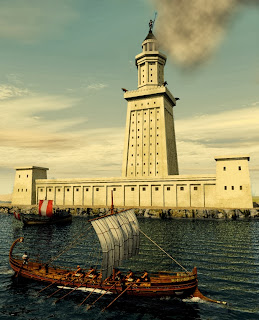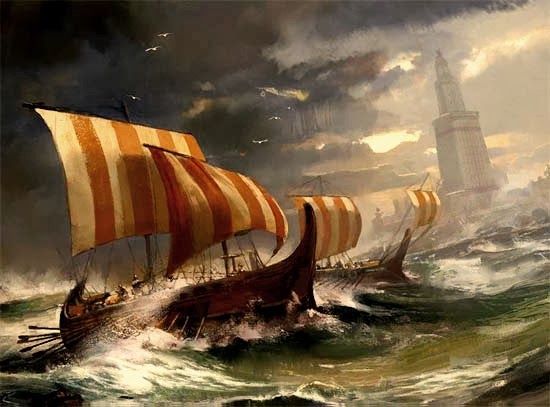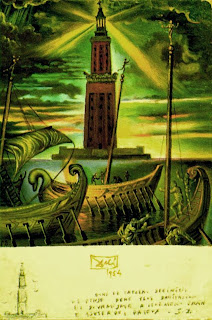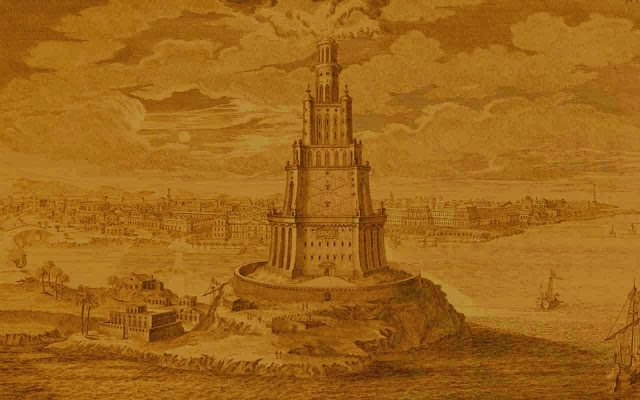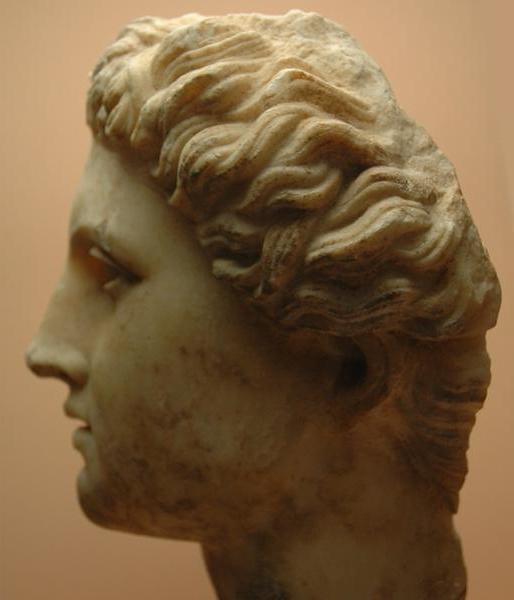Constructed from pieces of white stone and was structured in four levels. The lowest was the square base, the second was a square building, the third octagonal building and the fourth tallest a circular building on the top of which the statue of Poseidon or Apollo. The fourth level there was a mirror that reflected the sunlight during the day while at night it burned a flame to warn ships of the existence of obstacles.
The word beacon has been adopted by many countries and was widely used in Latin vocabulary and in languages such as French (phare), the Italian (faro), Portuguese (farol) and Spanish (faro).
General
The lighthouse was constructed on the Island Lighthouse. The island gave its name to the building and not the other way round, as believed. Modern lighthouses “borrow” also the name of the island. It is universally known by the name “Lighthouse” of Alexandria because they were just outside the port of Alexandria. Was artificially with a sort of bridge, the so-called Eptastadio (had, true to its name, length of seven stages) and formed a part of the port of Alexandria.
Because the configuration of the port and the region was flat and without some sign to warn ships, It served to give some kind of flasher for the approach to the port. The lighthouse was built by the engineer Swstrato Knidio, Architect, son of architect Dexifanoys who had also built the stage “Tetra” of Alexandria, the 282 e.g., While initially the study of the project was launched on the reign of the first King of the Hellenistic period, Ptolemy the’ of Egypt, General of Alexander the great.
The Lighthouse is a long narrow island, too close to shore and forming m this port with two spouts "in the Northwestern arm of the Egyptian Delta, Strabo tells us.
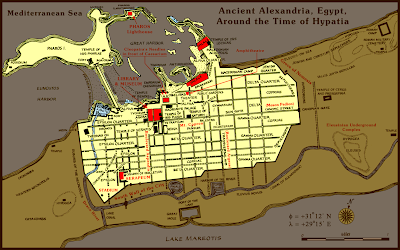
The name of the island, Lighthouse, It is likely that gave to Pharaoh, their name. On that island, in mythology, resided Proteus. The first port facility there was formed by Tuthmosis Iii around 1460 e.g.. to serve trade with Crete. Later in the reign of Ptolemy the Filadelfoy built stone bridge, the Eptastadion, so named because the length was seven stages (1300 m. about) and connecting the island with the beach of Alexandria.
«… at the end of the island, "continues Strabo" there is a rock, It is washed by the sea. On the rock is a multilevel tower built wondrous from white marble bearing the same name with the island. "
The tower that, brought to an apartment fire and made for the salvation of the ships especially during night surfing. Since the word "Lighthouse" indicates each marine crisp evenings pyrsoforo Tower illuminates, leads and especially warns sailors and their ships do not fall into the rough stuff, as shoals or shallow waters, as with Strabo describes the Island Lighthouse, or reefs, in sly pitfalls etc.
A mechanical and technological marvel
Amazing feat remains the passage of time the building of the famous Lighthouse of Alexandria, both constructional and technological. Fair classified in seven wonders. From ancient authors description of our rescue Strabo (Geographically, 17.1. 6-10) and Pliny (Natural history 36.83). It was built during the period of Ptolemy II of Filadelfoy by the famous architect Swstrato the Knidio, the Dexifanoys and its construction lasted twelve years.
The name "Lighthouse" took her from the homonymous islet Lighthouse located at the entrance of the harbour of the city. Its original name was "pyroforos Tower", but known as Lighthouse stayed and from this tow their well-known shipping beacons. It didn't take long to identify with the city itself and when you say "Lighthouse" they meant the Alexandria. The total amount reached the 140 m.(!) and was built in four levels.
The first, EUR 71 measures, It was the tallest of all. It was square, pierced by Windows, and around – around there were numerous rooms where engineers were housed and keepers. In the Center there was a hydraulic mechanism , with the help which were the various supplies and fuels of turret. The second section, on the first, It was octagonal, filled with helical stairs, and the third, on the second, It was circular, adorned with columns.
which were the various supplies and fuels of turret. The second section, on the first, It was octagonal, filled with helical stairs, and the third, on the second, It was circular, adorned with columns.
In the last section to the top was the mechanism that reflected light. There was so much fire, and sensitive organs that reflected many miles away (300 stages). Many reports talk about a weird "mirror", which cause admiration more than the building and not ragize.
Some say it was from glass, other than transparent processed stone, and when sitting underneath, could see ships at sea that were not visible to the naked eye. We did here a first telescope; Everything is possible. And it was only one reflector or there were many; Unfortunately the information we have is incomplete.
Also many artworks with Automation: A statue of finger followed the trajectory of the Sun during the day (What was it about the night;) another one that meant hours of day with varied and melodic voices, and another who gave the slogan of alarm when enemy fleet that was not yet visible. See here many automated applications, hydraulic organs, mirrors etc.
A brilliant tradition in application , a construction feat that implement the technological standards of its time. The Arab conquerors excited from the Lighthouse, They called him "El-Manara», gave his name to the tall buildings of their religion, known as minarets. In Greek literature is lacking and such interesting topic. Very few elements give us the Greek authors.
, a construction feat that implement the technological standards of its time. The Arab conquerors excited from the Lighthouse, They called him "El-Manara», gave his name to the tall buildings of their religion, known as minarets. In Greek literature is lacking and such interesting topic. Very few elements give us the Greek authors.

There are of course incomplete entries of encyclopedias and only three foreign language studies have been translated into Greek and referred to the lighthouse. Foreign language studies there are of course many and I can not mention, but it is worth noting that there is great interest in the matter after the French newspaper le Figaro published an article titled "found the lighthouse of Alexandria" where istoroyntan investigations and discoveries of French archaeologists in Alexandria.
The Construction
The construction of high-rise building, the lighthouse, You probably started the 297 e.g.. at the time of Ptolemy the Savior's direct (305-282 e.g.), or the 283/2 e.g. According to a later chronicler Eysebio, Bishop of Caesarea, and ended in the reign of Ptolemy Ii, of Filadelfoy (284-246 e.g.).
Ancient writers, such as Strabo, Pliny the elder, Poseidippus and Lucian of samosata (115-180 a.d.) inform us that the construction of the lighthouse was commissioned to the architect and engineer, equivalent of Archimidous, the Swstrato of Dexifanoys from Knidos (City of Caria and headquarters of the Doric Hexapolis), who was also a friend of Kings Ptolemy (a) and (b). The Swstrato assigned lodges of the Temple of Aphrodite at Knidos, the "pendant" peripatitirion, and the subjugation of Memfidos without siege, but with simple diversion of the waters of the Nile.
According to Lucian, sostratus, After building built, wrote his name on this, and the name of the Reigning. Sostratus who report, possibly identical with an Ambassador of Ptolemy Ii, of Filadelfoy, Delos. However there is no indication.
The lighthouse of Alexandria is one of the seven wonders of antiquity, illuminating the voyage of ships for about 1500 years. It started being built in 280 e.g., year in which Rhodes egkainiazotan the famous Colossus. Was stoplight and worked night and day, a lamp for the ancients, Lantern for modern. Had height 140 measures and its light was visible from a distance 47 with 50 km.

Official, the first Ptolemy was the son of Macedon nobleman Lagoy. That is why Lagidwn dynasty called the Royal clan of Egypt that started with him and was lost with Cleopatra. Informally, though, everyone in Macedonia knew that Ptolemy was only one of the hidden feats of King Philip, illegitimate son of arsinoe, and therefore half-brother of Stretched. Besides, the name Arsinoe was playing in Palace of Egypt almost as much as the name Ptolemy Kings.
A Arsinoe, daughter of the first Ptolemy, murdered her husband, Lysimachus, King of Thrace, to marry her brother, King of Egypt, He got rid of his first wife, Arsinoe and this. Another married the brother of Ptolemy I also (the fourth), by whom was murdered. And yet another was Diane's sister Arsinoe who placed Julius Caesar to outplay, in order to not have prospective antapaitites to the throne.
He, though, the first Ptolemy was beautiful and andreio lad, sympolemistis of Alexander the great and head of the swmatofylakis. Became Commander of Egypt, When in 323 e.g.. stratilatis died. In the wild years, He participated in the wars of the successors and, the 301 e.g., He was on the winning side after the decisive battle of Ipsus, where he, kassandros, Seleucus and lysimachus discomfited the Antigonus.
Of the living Egypt, which was already King of the 305 e.g.. Proved worthy of the throne, He got the nickname Soter, protected letters and the arts and built the famous library of Alexandria, with a million volumes in the glories of, and the Museum, where stay free and philosophers working together, sages and poets. He died in 283 e.g..
and philosophers working together, sages and poets. He died in 283 e.g..
The second Ptolemy, He got rid of his wife to marry his sister, Arsinoe, stayed in history with the nickname Philadelphus, precisely for this option. The adikoysan, though.

Protect the letters and the arts equally effective, like his father, and it was he who funded the erection of the lighthouse of Alexandria, work that Ptolemy first had captured but did not live to see its completion. Father and son, Besides, they were the ones who put strong foundations to flourish and develop to the fullest the "Alexandrian era", Although subsequent Ptolemies, with a few exceptions, proved incompetent, degenerate and bloodthirsty.
Ptolemy II was the father of symbasilias the 285 e.g.. and autocrat of the 283 e.g.. The next time (282 e.g.) inaugurated the impressive stage of Alexandria (the said ' Tetra '), It was constructed by architect Dexifanis. His son was also architect, Sostratus, contracted to erect the lighthouse of Alexandria.
Ptolemy had banned to "sign" his work (so he put his name hidden) or he was too modest. WHAT,What to happen, a carved inscription at the base of the project, top layer of plaster, reported as a manufacturer of Lighthouse Tolomeo. Beneath the plaster, another inscription stated the following:
"SWSTRATOS DEXIFANOYS KNIDIOS SWTERSIN PLWIZOMENWN ' THEOIS HYPER
(Sostratus Knidios, his son Dexifanoys, {the devotes} the rescuers Gods in favour of vessels).
The Island Lighthouse is located just outside the port of Alexandria and was artificially with it thanks to a construction, known as Eptastadion (' seven stages ' length or 1.288 measures). The edifice was built with white stones on the edge of the island, so the sea surrounds it from the West and North side of.

According to the description of the Arab traveler Abu Yousef El Chagkagk Ibn Antaloysi, We visited in 1165, but also various depictions of the lighthouse on imperial coinage, cups, Mosaic etc we that the building was square, with approximately 8,5 each side measures. The building consisted of four levels (linked together by joints by pencil) starting with a base on which edrazotan:
The base had a height 6,5 measures on the part of the land (from the side of the sea was taller) and was square with each side length 8,5 measures. A ramp onto 16 arches, length approx. 183 measures, lead, the walls of the island, the elevated building portal. The height of the first floor from the ground was approximately sixty meters (ή 57,73 m. According to the Arab).
Newts or other sea gods, they were blowing trumpets or sea shells decorate the corners of the top of the first floor. The second level was a square building, with Newts to adorn the corners of, According to representation in Roman currency. Onto it, He had built an octagon (third level) building, with circle around it. On it he had built the cylindrical fourth level, on top of which had erected statue of the God Neptune (or of Apollo).
At this level was adjusted a giant mirror that sent the rays of the Sun on the sea, in order to be visible from far away. At night, a flame replace beams. The whole structure had a height 140 m. from across the sea. Inside there were galleries and a slightly sloping ramp with low steps, that lead as the top and used for carrying animal materials of fire on the roof. Completed in 270 e.g., twelve years after he began the erection of.
The second floor was octagonal with length of each side 18,30 m. and a height of approximately 30 m (ή 27,45 m.) The third floor was cylindrical with a diameter, According to the Arab 75,20 m. and height 7.32 m. At the top there was a proper statue of Zeus Sotiros about 5 measures, who brandishes lightning in his left hand and sceptre or Trident on the right. To him was dedicated the lighthouse.

Jupiter replaced, αργότερα, a mosque. According to some coins, at the top shows the Neptune who with his left hand clutching Trident, While with his right showed the sea.
The Tower exceeded the 100 measures. Approaching the 120 m. about. The wall had a thickness between 1,5 and 2 m. and you must clean the brickwork of the statements. Each floor stood out with a different length and height barrier. There were approximately 68 rooms, one of which rather lead underground to the sea. All apartments have at least one rectangle (or circular against others) window.
The entrance of the tower is said to lay low at the base but there is also the version, that is considered more accurate, the door was taller. on top of a scale which was based on a series of 16 curved arches.
The guiding light of the lighthouse must be released from the last level (cylindrical) or the top floor of the building. However the most ancient testimonies seem to agree that the fire which burned stood at the base of the Tower.
The fire that, as the most reasonably capable, real and practical material, for the season, that must be the firm, among other modern cases should be considered the dried manure, which burned in basis and with anaklwntan mirrors as the top of the building. The light of the lighthouse, According to Josephus in on the Jewish War, become visible at a distance 300 stages, i.e. about 55 km, or even exceeded by 10 times, According to Lucian. Pliny tells us that the whole construction cost 800 talanta.


In about the same position, According to Ifaistionos's letter to the Governor of the city Kleomeni, appears to predates fanoforos Tower much smaller dimensions already from the time of m. Alexandrou.
Near the Lighthouse there was a sanctuary of Isis Farias or Eidotheis, which bred in the farms of the eleusinian coast Tritwnwn. The sanctuary was converted into a church of Raphael, which survived until the 15 century. According to Eustathios ypomnimatisti him of Dionysiou, the Lighthouse was still except the lighthouse and a Antifaros, the location of which is unknown, as well as the tombs of Osiridos and of Eidotheis of Proteos.
The time was unforgiving in this miracle. The upper and middle part of were destroyed until the 90 a.d. In 500 a.d. about and on Emperor Anastasios the quay and the foundations were gradually destroyed by the sea therefore commissioned architect Ammonium repair, and he performed with the above.
The first start of the lighthouse was the earthquake of 796 and the second one in the 1303. The 1303 the lighthouse of Alexandria works for last time.
Bore even twenty years, as every time they were repairing the damage. On the 874 a.d. Ahmed Toyloyn empn, proceeded to repair the top, repair which was probably the last one that accepted the pyrsoforos Tower. With the weather, Alexandria lost commercial glamour and the port abandoned. With them and the lighthouse. Though, the earthquake of 1324 collapsed and the basis.

That year, the Arab Ibn Mpatoysa did not manage to get into the rubble of. The Emir of Egypt, Kait Veis, When 15 century, who demolished completely the lighthouse, found useful the remnants and used, in 1480 and in place of, with his own materials, He built an Islamic fortress with Navy lighthouse at the same time.
The fortress still survives, and the region is military and inaccessible. It was said that minarets on mosques of Egypt followed the architectural design of the lighthouse.
THE THREE TOWERS
The lighthouse were three marble towers, built on a foundation of stone ogkolithoys. The first tower was four-sided and contained apartments for the workers and soldiers. From up there was a second octagonal, with spiral ramp that led to the last Tower.
THE LAMPRO FOS
The last Tower had a cylindrical shape and inside the burned the fire that drove the ships safely to port. From the top there's the statue of Zeus the Savior. The total height of the lighthouse was 117 measures.
THE HIGH GLOSS, HEADLIGHT
For maintenance of fire they needed huge amounts of combustible. The powered by Woods, They carried thanks to the spiral ramp horses and mules. Behind the fire there were brass sheets that reflected the brilliance of the sea. Ships could distinguish from 50 km away. During the twelfth a.d. century the port of Alexandria was filled by mud and ships ceased to use it. The lighthouse fell into disuse. Possibly sheets of brass rear clawed and were made currencies.

Many reports talk about a strange mirror glass, or transparent processed stone through this could see ships at sea, that was not visible to the naked eye (something like a telescope).
Seeing that the lighthouse outside of the admirer of construction, many applications include automatic mechanisms, hydraulic organs, mirrors etc , samples of the technological era. There are many references to works of art with automation as a statue that his finger followed the trajectory of the Sun during the day, another one that meant hours of day with varied and melodic voices, another who gave the slogan of alarm when enemy fleet, that was not yet visible.
H Complete
After the unexpected and unexpected death of Alexander the great Ptolemy declared himself King of the huge Empire, who created the Alexander the 305 e.g.. During the period of his reign started and the construction of this megaloyrgimatos but didn't managed to see it completed after he died in 283 e.g.. His son, Ptolemy’ Philadelphus, saw the project be completed twelve years from the commencement of the building 270 e.g..
After the pyramids of Egypt, the lighthouse of Alexandria is the longest duration monument of the region, they managed to rescued to the almost complete destruction of three earthquakes that took place in 796 e.g., the 1303 and the 1323 a.d. The 1323 was the year, that the Arab visitor impn Batuta couldn't enter the lighthouse from the many ruins were gathered.
The 1480 a.d. the Sultan of Egypt, Kait-mpeis, use the remaining ruins by dragging them to the castle building on the same site, on the Foundation of the lighthouse. But this Fort even though it had been renovated in the early 19th century. It was demolished by the English in 1882.

The function of the lighthouse
In the Center there was a hydraulic mechanism with the help of which were various supplies and fuels of turret. The second section, It was octagonal, filled with stairs and the third, It was circular, adorned with columns. In the last section on top was the mechanism that reflected light.
There was so much fire and sensitive organs while the day the spectators in the sky a great column of smoke that reflected many miles away (300 stages). From the top there's the statue of Zeus Sotiros.
Many reports talk about a strange mirror glass, or transparent processed stone through this could see ships at sea, that was not visible to the naked eye (something like a telescope).
Seeing that the lighthouse outside of the admirer of construction, many applications include automatic mechanisms, hydraulic organs, mirrors etc , samples of the technological era.
There are many references to works of art with automation as a statue that his finger followed the trajectory of the Sun during the day, another one that meant hours of day with varied and melodic voices, another who gave the slogan of alarm when enemy fleet, that was not yet visible. For maintenance of fire needed enormous amounts of fuel.


The powered by Woods, carrying thanks to the spiral ramp horses and mules. Ships could distinguish from 50 km away. During the twelfth century the port of Alexandria was filled by mud and ships ceased to use it.
The lighthouse fell into disuse. Possibly sheets of bronze mirror clawed and were made currencies. During the fourteenth century an earthquake destroyed the lighthouse. A few years later the Muslims used the materials for the construction of a fortress. The Fort it was reconstructed and is still in place, the first lighthouse in the world.
Archaeology
It all started in the early 90s, When huge blocks of concrete were thrown into the sea, in the Eastern harbor of Alexandria, to fend off the waves of the Mediterranean, the fortress built on the island the Lighthouse 1477 the Mameluk Sultan Kaϊt-Bey, on the Foundation of the ancient lighthouse.
Asma H cinematographer travels back El. Bakri shuddered at the sight of boulders that threatened to bury forever an important part of global historical heritage. The boulders were “sit” on Antiquities.
So, in October 1994, six French and six Egyptians divers started the underwater surveys for identifying and recording parts of monuments and buildings of ancient Alexandria. Sphinxes, Obelisks, and statues-Giants testify past a brighter economic, cultural and religious centre of the Mediterranean. Many of the artfully sculpted stones were parts of one of the Seven Wonders of antiquity, the lighthouse of Alexandria.

What do we know truth, for’ This edifice, that for centuries was the stigma of the city and drove safely the ships at the port of; From the time of Homer (8St p. X. century) and maybe by older, the Small Island Lighthouse, with the natural port of, used by foreign traders as a safe station for ships en route to the Kanwbiko arm of the Nile, where meeting Egyptians merchants who were down the great river.
H town of Alexandria was founded in 331 p. X. from Alexander the great and, Boasting a privileged position, began to evolve quickly. Two, though, were the problems faced by the calling of the Mediterranean ferries: the low shores that help find port and the shoals around the Island Lighthouse that tsakizan when was Tempest.
O childhood friend of Alexander and Commander of Ptolemeus A’ He realized quickly that they needed a tall structure and any mechanism that would make it easier for ships to locate the city and brought into port safely. The building was constructed on the Island Lighthouse, from which they get their name since the lighthouses.
H construction of the lighthouse began in 285 p. X. around and finished 279 p. X. The testimonies of historians differ as to the amount of. O most reliable calculation based on luminescence. O Jewish historian Josephus mentions that the lighthouse was visible from a distance 300 stages, i.e. 30 current nautical miles.
From this we conclude that the height must have been approximately 150 measures. Arab testimonies give us a picture of the three-storey lighthouse. The ground floor was marble with a square floor plan, the first floor with octagonal and the second with circular. From the top stood the light source and atop a statue of Poseidon, EUR 7 measures.

The ground floor of the building had several Windows and included 300 about rooms for the guards and technicians, and large warehouses for woods that burned the lighthouse. In the center of the edifice there was vertical stairway with two helical ramps, wide enough to pass a loaded animal, and some mechanical provisions that put Woods at the top of. The stairs had plenty of natural lighting from skylights exterior walls.
From narratives of the season, We know that the lighthouse had a mirror was used to reflect a flame from ritinoycha Woods. The day the lighthouse looked mostly from tobacco. Some narratives describe the mirror as if it were made of glass and even in hollow shape. O legend says that, When koitazes in the mirror of the lighthouse, you could see ships were too far away and not look to the naked eye. Or that the mirror could gather sunlight and burn enemy ships from long distance.
It is said, that Archimedes had designed the optical device the strobe. O lighthouse was more wondrous machines. At the top of the Tower, the statue of Neptune had a complex mechanism, that allowed it to rotate and anebokatebazei hand showing the position of the Sun day night.
Another statue announce with melodic tones of the day, as the clocks of medieval monasteries that had no dials and indicators. It is said still, There was the statue of a Triton sound loud alarm the moment someone enemy fleet lifted anchor, even though it was days away, While other Newts brought trumpets that with their sound helped ships approaching the port when there was mist.
All this will seem incredibly if you hadn't saved up today a currency of the time of the Roman Emperor Marcus Aurelius, depicting the statue of Neptune and the Tritons. Sixteen centuries withstood the lighthouse the high seas in the high seas and frequent large earthquakes.

They had repeatedly made efforts to repair the damage and maintenance of this great edifice until the first half of the 14th century, so was completely destroyed on’ because rather, strong earthquake. So, the “tracks” one of the Seven Wonders of the World strewn on the seabed in the sea Alexandrinis, to come back to light in our days.
Photographic Material
PIGES :


































